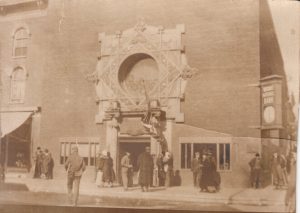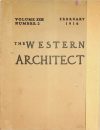MERCHANTS NATIONAL BANK
The Merchants National Bank building is the heart of Grinnell’s visual identity. The city of Grinnell’s official logo and motto, “Jewel of the Prairie” refer to the building’s stained glass rose window.
Referred to by the term “jewel box” by its architect, Louis Sullivan, Merchants National Bank is one of eight small bank buildings Sullivan designed across the Midwest during the end of his career.

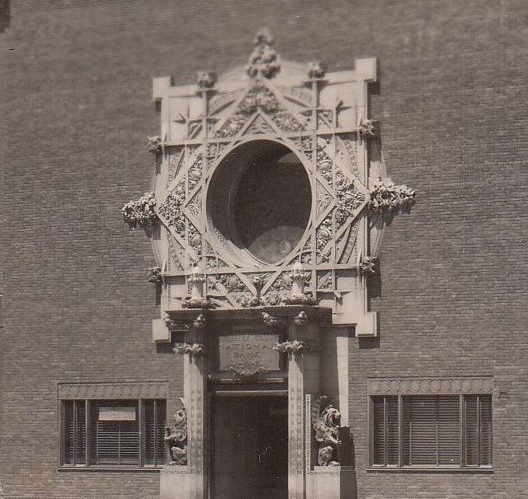
History
Grinnell’s Jewel Box, designed by the groundbreaking Chicago architect Louis Sullivan, was originally constructed in 1914 for Merchants National Bank. This early Grinnell bank was organized in 1883 and was originally located at the corner of Broad and Commercial Streets, one block south of the current location. In response to steadily increasing business, they decided to relocate and expand. In 1910, Merchants National Bank purchased the lot of their future home, and hired Louis Sullivan as its architect in 1913. The newly constructed building opened on New Year’s Day of 1915.
Despite their earlier success, the Merchants National Bank inhabited the Jewel Box for just under ten years. In November of 1924, the bank suddenly failed, and Citizens National Bank took its place the following year. Following the stock market crash of 1929, Citizens National Bank followed suit and closed. In 1930, The Brenton brothers purchased the previous bank’s assets and sponsored a new Poweshiek County National Bank. Although the building underwent a 1955 remodeling and 1976 expansion, its ownership finally remained steady for the rest of the century (its name changed to Brenton Bank in 1985, but its affiliation remained the same).
In 1999, the Grinnell Area Chamber of Commerce moved into the original Jewel Box building, renting from the bank that owned the property. In 2001 the northern addition was purchased by Wells Fargo.
Visit the timeline page for a more in-depth history of the building.
Gallery
Further Reading
Lucille “Sid” Potts was one Grinnell resident interviewed for the “Voices from the Past” oral history project, who began working for Citizens National Bank in 1929. For more information on the bank changes and how the Great Depression affected these Grinnell banks, you can read or listen to her interview:
Local researcher Dan Kaiser has written a research paper about B. J. Ricker, one of the Merchants National Bank directors. Kaiser’s paper discusses Ricker’s role in hiring Louis Sullivan and the bank’s financial crisis.
Louis Sullivan
Louis Henry Sullivan was an influential American architect credited for his distinct, innovative style and involvement with the Chicago School of Architecture and Prairie School of Architecture.
Sullivan was born in 1856 and began studying as an architect at age 16. After briefly enrolling in MIT and the Ecole des Beaux-Arts in Paris, Sullivan moved to Chicago in 1873. There, he met Dankmar Adler, an established architect and engineer, and the two formed an architectural firm. Sullivan’s partnership with Adler was extremely successful and prolific—these buildings are among the early prototypes for the modern skyscraper.
While partnered with Adler, Sullivan was also a mentor to the architect Frank Lloyd Wright. Sullivan is regarded as the inspiration for the Prairie School style of architecture.
Explore the gallery below to view some of Sullivan’s notable commercial building designs.
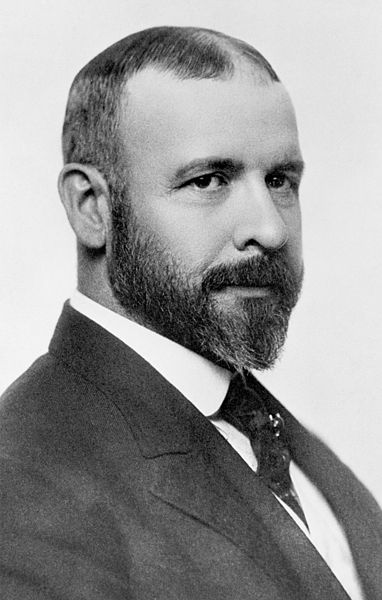
Following the financial panic of 1883, Sullivan and Adler’s partnership dissolved in 1895. There is no single explanation for the decline of Sullivan’s business, but his refusal to conform to current trends, extravagant lifestyle, loss of income, and deteriorating relationship with his wife were likely contributory factors. Sullivan continued to design, but he had trouble finding consistent work.
Sullivan turned from Chicago to designing for relatively smaller communities in the Midwest. Beginning with his commission for the 1906 National Farmers’ Bank in Owatonna, Minnesota, Sullivan designed a series of eight banks in Midwestern towns, which he termed “jewel boxes.”
You can learn more about Sullivan’s decline and later architectural works from the National Parks Service article, “Beyond Chicago: Louis H. Sullivan’s Late Masterpieces.”
Jewel Boxes of the Midwest
Architecture
One of Sullivan’s guiding design principles was that “a building should respond to its own particular environment.” The site of Merchants National Bank was originally flanked by brick commercial buildings and situated across Broad Street from the now-demolished Old Stone Church. Its distinctive features—tapestry brick, terra cotta ornamentation, and stained glass—reflect the bank’s continuity with its original surroundings.

Local historian Dan Kaiser notes the significant presence of Prairie School architects who designed Midwest banks in his paper “Architects’ Patrons in Early Twentieth-Century Iowa.” Midwestern bank directors in the early twentieth century sought out architects whose designs were distinctly American and would reflect a shift to a more progressive image.
In his talk on how Louis Sullivan was selected as the architect for Merchants National Bank, Max Smith, former president of Brenton Bank, commented:
“The banker wanted to humanize his institution; to become a counselor to his clients; and as a friend, advise them in their financial matters. Elegant new buildings were one way to project a new progressive image of respectability and stability. It was in this climate that Merchants decided to rebuild.”
Sullivan’s jewel box design resembles a safe box–a secure holding for money and valuables. With its entryway guarded by a pair of winged lions, the building communicates stability.
- You can read a digitized copy of the 1916 Western Architect, which contains photographs and architectural descriptions of the newly constructed Merchants National Bank building.
- The Grinnell Herald reported on the opening of Merchants National Bank in 1915 in great detail. The article tours all of the bank’s distinctive architectural features.
Interior Views
Timeline of Merchants National Bank
Louis Sullivan’s Jewel Box bank changed ownership several times after its opening as Merchants National Bank in 1915. Explore the timeline below to learn about the history of the bank and its changes throughout the twentieth century.
View the timeline in full screen here
Resources
Archives Materials
The Grinnell Chamber of Commerce made a large donation to the Drake Community Library Archives in 2023, including photographs, Brenton Bank materials, brochures, and an original copy of the 1916 Western Architect featuring Merchants National Bank. These materials, in addition to additional materials owned by the archives, can be viewed by appointment.
You can make an appointment with the archivist here.
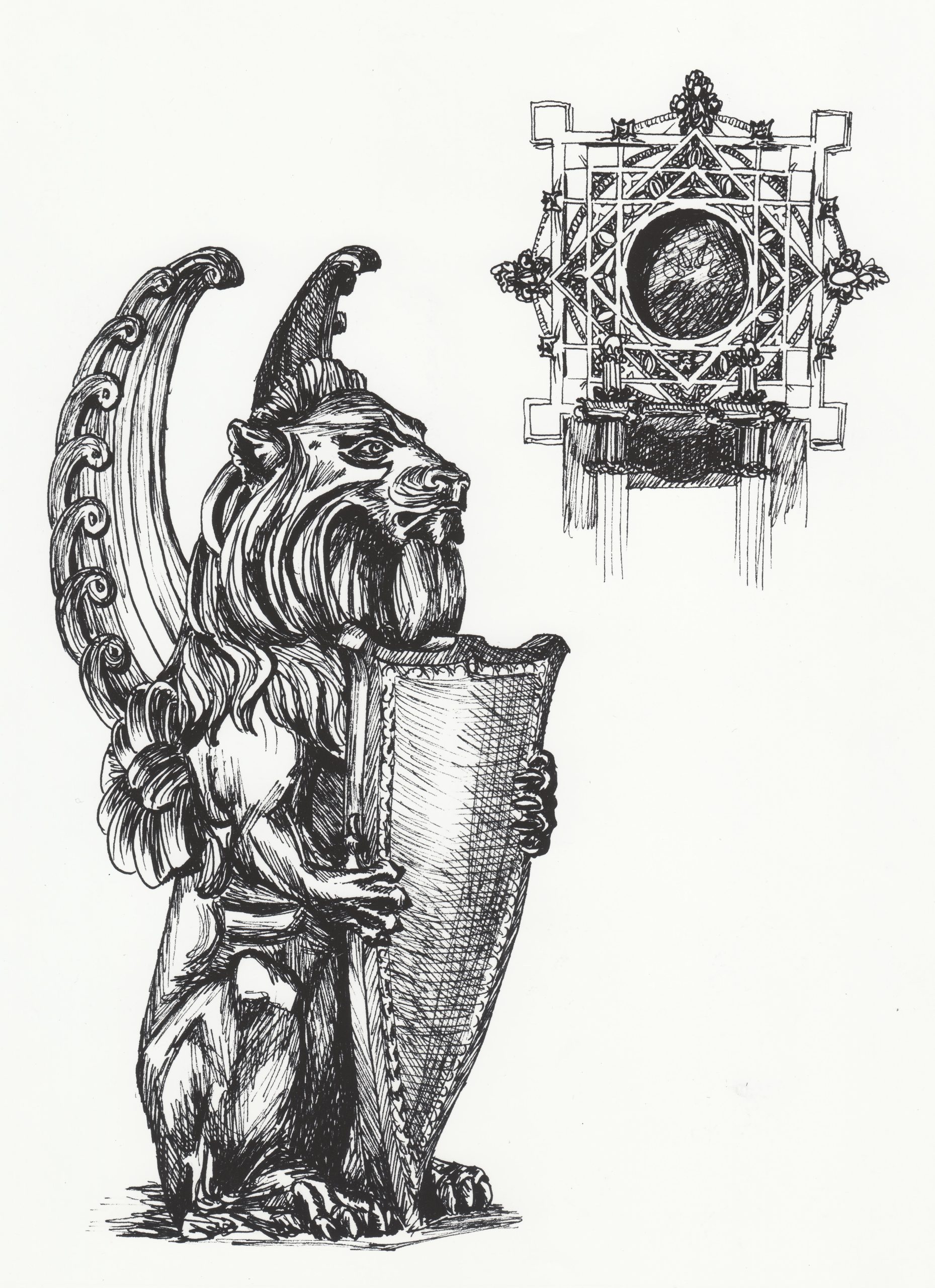
Suggested Reading
- You can read a digitized copy of the 1916 Western Architect, which did a lengthy feature article on the building. It contains photographs and architectural descriptions of the newly constructed Merchants National Bank building.
- The Grinnell Herald reported on the opening of Merchants National Bank in 1915 in great detail.
- Max Smith, a long time president of the Grinnell Brenton Bank, played a critical role in preserving the history of the building. He gave a talk in 1989 on how Louis Sullivan was selected as architect for the Merchants National Bank building. You can read the script for Smith’s talk, titled “Why in the World is there a Louis Sullivan Building in Grinnell?” as a PDF document.
For further reading, Louis Sullivan’s Merchants National Bank by Bill Menner is an informative history of the building accompanied with great photographs of the architectural details and interiors. The book is available in the library collection, with both a circulating copy, as well as one in the archives.

